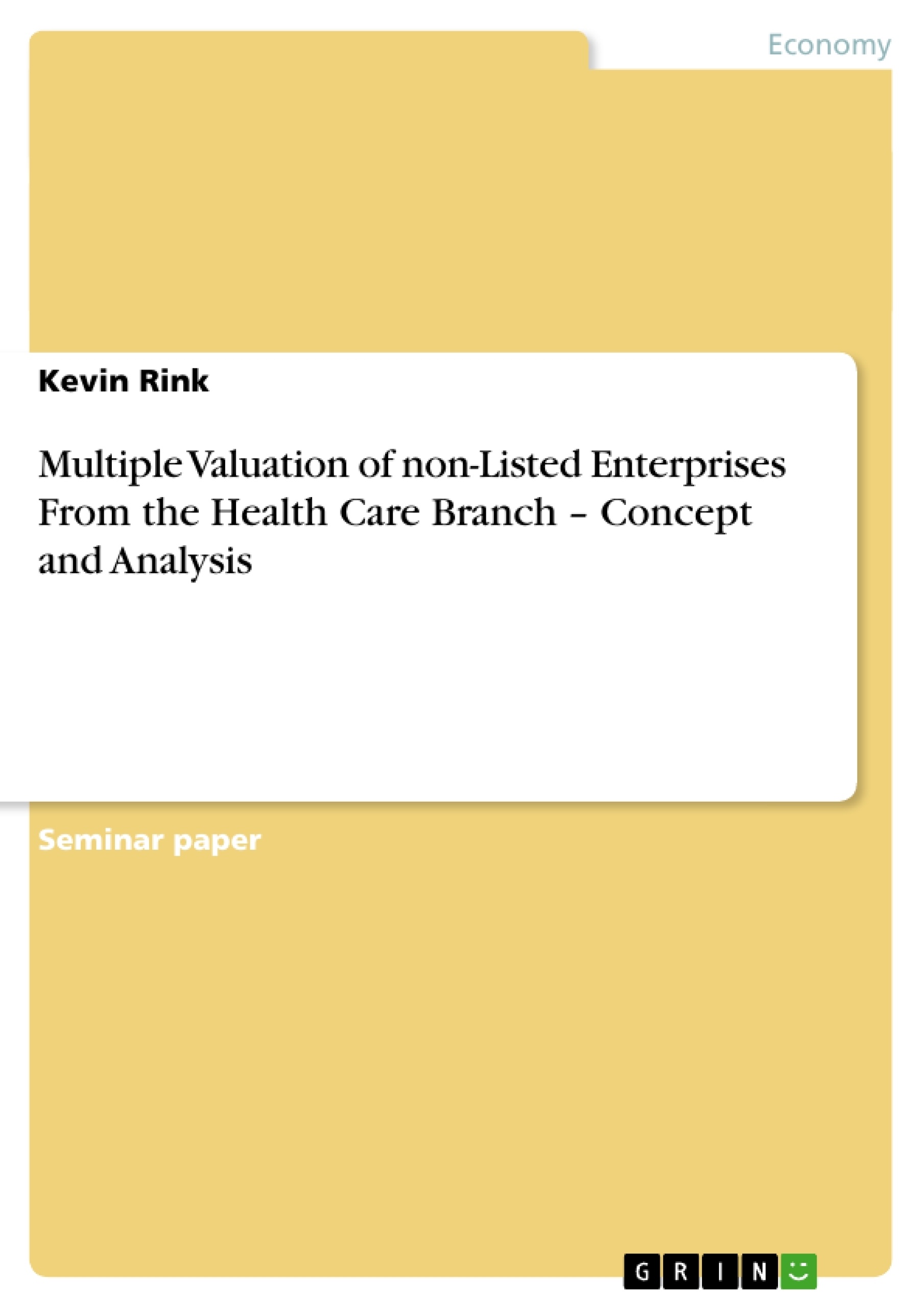The valuation of companies is one of the key issues facing corporate finance applications today. In practical business, several methods of valuation compete with each other. Aside from the discounted cash flow method, the valuation of companies with multiples is one of the most common methods used (Lie & Lie, 2002, p. 44).
(...)
The aim of this paper is, on the one hand, to give sound insight in multiple theory and, on the other hand, to value a privately held small- and medium-sized enterprise (SME) in the hospital sector using multiples.
Inhaltsverzeichnis (Table of Contents)
- Introduction
- Problem Definition and Objectives
- Course of the Investigation
- Conceptual Framework
- Underlying Assumptions and Derivation of Multiples
- Categorization of Multiples
- The Approach to Multiple Valuation
- Entity Valuation of a Medium-Sized Health Care Company
- The Target Company From the Health Care Branch
- Key Steps of the Multiple Valuation
- Assessment of Value Drivers
- Identification of Comparable Companies
- Calculation and Evaluation of Peer Group Multiples
- Valuation of the Target
- Critical Review of the Valuation
- Conclusion
Zielsetzung und Themenschwerpunkte (Objectives and Key Themes)
This report aims to provide a comprehensive understanding of multiple valuation theory and its practical application in valuing a privately held SME in the hospital sector. It will focus on the underlying assumptions and methodologies of multiple valuation, considering the complexities of the healthcare industry and the valuation of non-listed companies. The key themes explored in this report include:- Multiple valuation as a method for valuing companies, particularly in the context of leveraged buyouts, initial public offerings, mergers, and acquisitions.
- The challenges and intricacies involved in valuing companies that are not publicly traded, particularly those operating in complex market environments like the healthcare industry.
- The application of multiple valuation techniques to a specific medium-sized health care company, highlighting the practical steps involved in identifying comparable companies, assessing value drivers, and calculating relevant multiples.
- A critical review of the valuation process, evaluating the strengths and limitations of multiple valuation methods in the context of the health care industry.
- The theoretical foundations and practical implications of using multiples to value firms, acknowledging the ongoing debate about their reliability and limitations.
Zusammenfassung der Kapitel (Chapter Summaries)
The report begins with an introduction outlining the importance of company valuation and the prevalence of multiple valuation methods. It highlights the challenges associated with valuing non-listed companies, especially those operating in the healthcare sector. The report then delves into the conceptual framework of multiple valuation, exploring its underlying assumptions, deriving common multiples, and outlining the overall approach to multiple valuation. The third chapter focuses on the practical application of multiple valuation to a specific medium-sized health care company. This chapter details the steps involved in identifying comparable companies, assessing value drivers, and calculating relevant multiples. Finally, the report concludes with a critical review of the valuation process, analyzing the strengths and limitations of multiple valuation methods in the context of the healthcare industry.
Schlüsselwörter (Keywords)
The primary focus of this report is on multiple valuation and its application in the health care sector. Key terms and concepts explored include company valuation, non-listed companies, multiple valuation, comparable company valuation (CCV), value drivers, and peer group multiples. The report also examines the complexities of the health care industry, specifically addressing the valuation of hospital operators and the challenges posed by the differences in regional health care systems and state control.
- Arbeit zitieren
- Kevin Rink (Autor:in), 2009, Multiple Valuation of non-Listed Enterprises From the Health Care Branch – Concept and Analysis, München, GRIN Verlag, https://www.grin.com/document/147110



